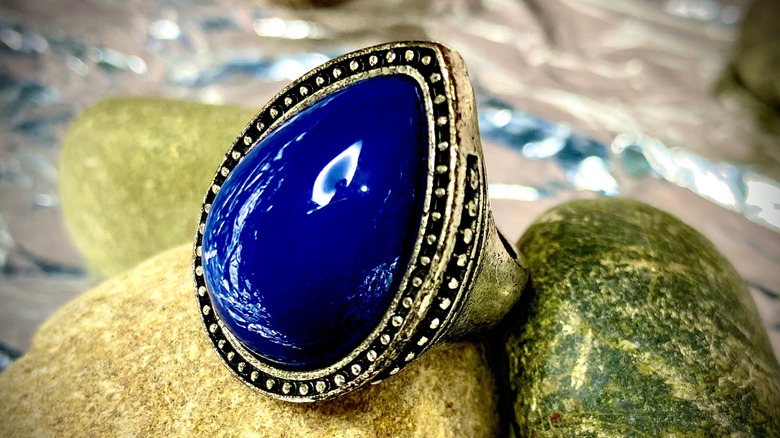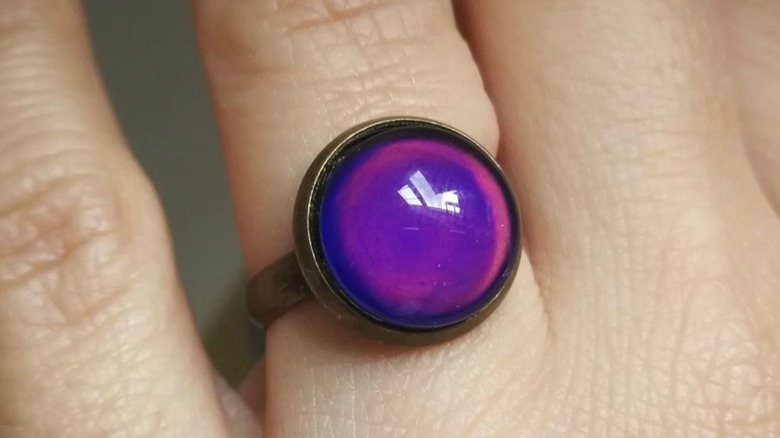Your Mood Ring Color Doesn't Mean What You Think
When mood rings first hit the market in 1975, they launched one of the most memorable cultural fads in history. Within three months of the launch, 40 million rings had been sold, along with necklaces, bracelets, and more. All were based on a bold promise: this jewelry knows what you're feeling. Each ring featured a band or gem that would change color, with each shade linked to a specific mood. Green was the baseline, indicating a neutral mood, while blue meant the wearer was emotionally charged but not stressed, violet indicated passion or intense joy, amber signified mixed emotions, gray meant the wearer was anxious, and black meant a highly tense and nervous state.
The mood ring never claimed to actually read people's minds. Rather, the ring changes color in accordance to the wearer's body temperature. Inventors Josh Reynolds and Maris Ambats designed the original mood ring using thermochromic liquid crystals sealed between a metal ring band and a layer of clear plastic or glass. The technology relies on the changing phases of liquid crystals, which in this case alter their molecular structure according to temperature. These changes in structure affect how the crystals reflect light, thereby changing the ring's color. Since body temperature is associated with emotion, the color-shifting crystals in a mood ring could potentially give some indication of your mental state, but it isn't an exact science.
The science in favor, and against, mood rings
The mood ring color spectrum directly correlates to the wearer's body temperature. A colder body temperature will turn the ring gray or black, which is why mood rings typically appear black when they are not being worn. At an average body temperature of 98.6 degrees Fahrenheit, the liquid crystals show their neutral, green phase. When exposed to higher body temperatures, the rings turn blue or purple, indicating a state of passion.
These correlations between temperature and mood do have a biological basis. Mammals control body temperature through a part of the brain called the hypothalamus, which is also closely associated with mood. Furthermore, there's a close relationship between your mood and your respiratory and circulatory systems. When you're stressed, your body directs blood to the internal organs, making your skin cooler. On the other hand, more impassioned states release adrenaline, widen capillaries, and send blood rushing to the extremities, which is the same reason you might blush when you see your crush.
Mood rings are flawed, however, because there are lots of outside factors that can alter their performance. Your emotions do have an effect on your body temperature, but so do many other things, such as exercise or the temperature of the space you're in. Furthermore, different people's bodies may react differently to mood and temperature, making mood rings very sensitive to some wearers and weak to others. Individual psychology is far too nuanced for there to be any universal indicator of mood.

